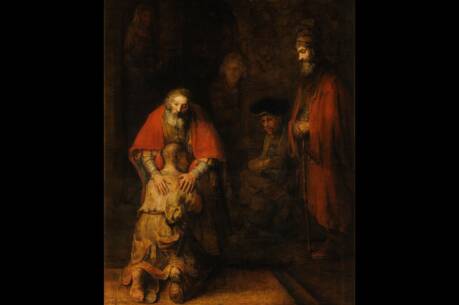The Witness of the Bread
There is a richness to the story of the disciples on the road to Emmaus that makes it difficult to consume it in its entirety or to exhaust its sustenance. Even seemingly minor details nourish the reader in surprising ways. Emmaus itself, the village to which Cleopas and the unnamed disciple are journeying, appears elsewhere in the Bible in 1 Mc 3:40. It seems to bear little connection to Luke’s notice of the city, but there are intriguing links.
Emmaus was the site of Judah Maccabee’s great victory over the Seleucid general Lysias and the army of Antiochus Epiphanes in 166 B.C. Judah’s army “marched out and encamped to the south of Emmaus” (1 Mc 3:57), and against great odds the Maccabees prevailed over the Seleucid army. The goal was to purify and restore the Temple, which ultimately resulted in the establishment of Hanukkah, but the means by which this would be accomplished was military battle. At stake was the freedom to live and worship as Jews. Prior to the battle Judah says, “And now, let us cry to Heaven, to see whether he will favor us and remember his covenant with our ancestors and crush this army before us today. Then all the Gentiles will know that there is one who redeems and saves Israel” (1 Mc 4:10–11).
Judah’s hope was that the Gentiles would come to know that it was God who gave Israel victory, that it was God who was Israel’s redeemer. A variant of the Greek verb for “redeem” used by Judah is used by Cleopas as he walks in sadness toward that same village of Emmaus, the site of one of Israel’s greatest military victories. He speaks to the stranger beside him (Jesus), telling him, “We had hoped that he was the one to redeem Israel.”
Is Luke telling us, by using the same Greek word, why Cleopas and the other disciples had such a hard time comprehending Jesus’ crucifixion? Compared to Judah’s crushing military victory, which was proof that “there is one who redeems and saves Israel,” did not Jesus’ mission, which ended on the cross, appear to be an abject failure?
It is here that the radical witness of Jesus and the church would be shaped: God’s redemption would be like nothing they had imagined. It would be made known along the road to Emmaus but in a way that renounced the weapons of war and embraced the food of hospitality. The recognition of the risen Jesus, mysteriously hidden to Cleopas and the unnamed disciple, occurred “when he was at the table with them” and when “he took bread, blessed and broke it, and gave it to them. Then their eyes were opened, and they recognized him.”
But it must be said that even though Cleopas and his companion did not initially recognize Jesus and were immersed in hopelessness, they still invited the stranger to eat with them, to share their table. It was this act of simple hospitality that led to the breaking of the bread and the opening of their spiritual eyes. Jesus was with them; the victory had been the resurrection.
The breaking of the bread takes us both backward into the life of Jesus and forward into the life of the church. For the Emmaus story uses the same language as the story in Luke of the feeding of the 5,000: “Taking the five loaves and the two fish, he looked up to heaven, and blessed and broke them, and gave them to the disciples to set before the crowd” (9:16–17). This miracle certainly points toward the eucharistic celebration, but we ought not to ignore the basic acts of hospitality and physical feeding by which and through which spiritual nourishment can take place.
And so the breaking of the bread on the road to Emmaus also points forward to the need for hospitality in the life of the church, the means by which Jesus is seen in the face of the stranger and the spiritual nourishment of community, through which we share the Eucharist, the body and blood of Christ. Because Jesus had been raised, the church dedicated itself “to the breaking of bread” (Acts 2:42, 46), in which hospitality and spiritual nourishment are combined to make clear that he is the one through whom redemption has come.
This article also appeared in print, under the headline “The Witness of the Bread,” in the April 28-May 5, 2014, issue.








